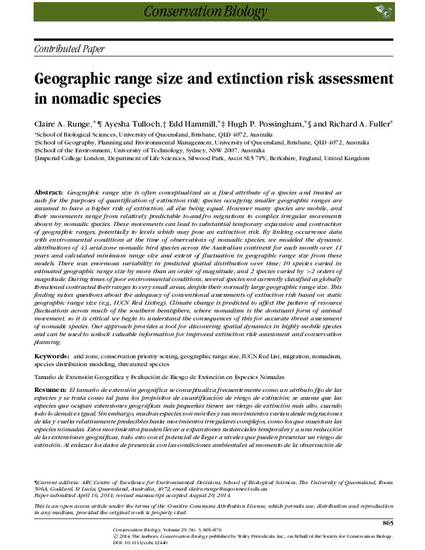
Article
Geographic range size and extinction risk assessment in nomadic species
Conservation BIology
(2015)
Abstract
Geographic range size is often conceptualized as a fixed attribute of a species and treated as such for the purposes of quantification of extinction risk; species occupying smaller geographic ranges are assumed to have a higher risk of extinction, all else being equal. However many species are mobile, and their movements range from relatively predictable to-and-fro migrations to complex irregular movements shown by nomadic species. These movements can lead to substantial temporary expansion and contraction of geographic ranges, potentially to levels which may pose an extinction risk. By linking occurrence data with environmental conditions at the time of observations of nomadic species, we modeled the dynamic distributions of 43 arid-zone nomadic bird species across the Australian continent for each month over 11 years and calculated minimum range size and extent of fluctuation in geographic range size from these models. There was enormous variability in predicted spatial distribution over time; 10 species varied in estimated geographic range size by more than an order of magnitude, and 2 species varied by >2 orders of magnitude. During times of poor environmental conditions, several species not currently classified as globally threatened contracted their ranges to very small areas, despite their normally large geographic range size.
Disciplines
Publication Date
2015
DOI
https://doi.org/10.1111/cobi.12440
Citation Information
Edd Hammill. "Geographic range size and extinction risk assessment in nomadic species" Conservation BIology Vol. 29 Iss. 3 (2015) p. 865 - 876 Available at: http://works.bepress.com/edd-hammill/42/
